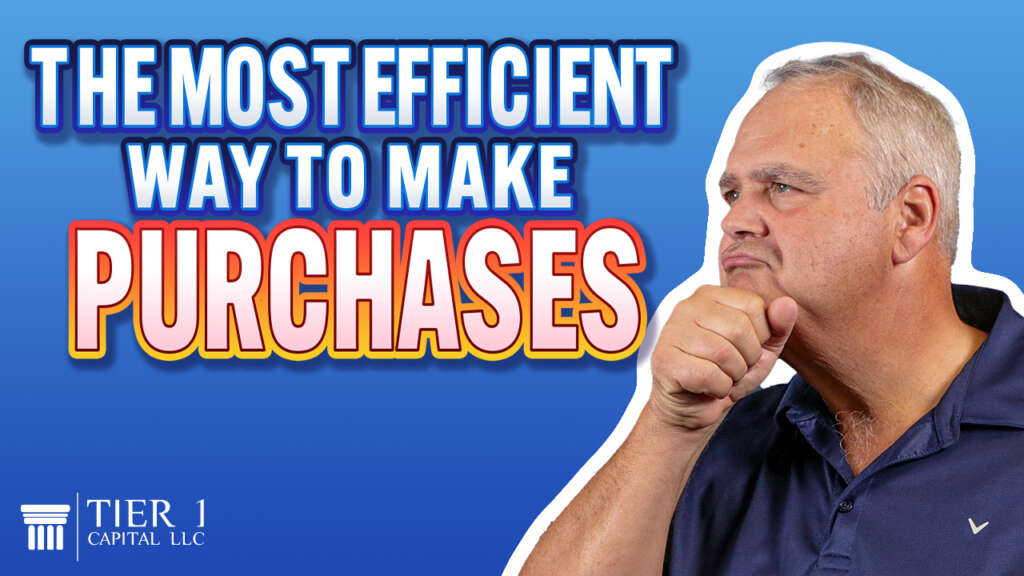
Do you realize that we finance every single purchase we make, whether we pay up interest by financing or give up interest by paying cash? There’s not really any middle ground. What is the best way to make purchases in the most efficient manner?
You see, most people don’t realize that each and every one of our dollars also has an opportunity cost. And by making purchases in an inefficient way, you’re giving up that opportunity cost.
Simply put, opportunity cost is what else you could have done with your money. Instead of spending it, if you saved it and were able to earn interest, that becomes your opportunity cost. So we don’t only lose the money that we spent on that item, we also lose the ability to earn interest from that money.
So let’s face it, we all want to be as efficient as possible with our money. But the reality is, that we are unknowingly and unnecessarily giving up control of our money and our hard-earned profits. That’s why we say it’s not what you buy, it’s how you pay for it that really matters.
Let’s say you have $10,000 in the bank, and coincidentally, you have a purchase that’s going to cost you $10,000. Well, if you have the cash, you may say, hey, I’m going to use this cash because when I don’t have to pay any interest. But that would be the wrong answer.
What we found is that most people who pay cash to make purchases do so in order to avoid paying interest. But what they don’t see is the interest they could have earned had they deployed that cash a little bit differently.
This is especially relevant in today’s economic environment because, let’s face it, bank CDs alone are paying a relatively high-interest rate these days. So even with that interest rate of a CD, you could be earning more on your money by not spending it.
Now, listen, we’re not saying don’t make the purchase. What we’re saying is there may be a more efficient way to make that purchase. So, number one, you can be in more control of your money, and number two, you could actually earn interest on your money rather than giving away interest that you could have earned.
Now, you may be wondering what is the optimal way to make this purchase for $10,000. Well, the answer is to leverage putting your money to work and also making the purchases. You see, by using other people’s money or ideally using your own money and leveraging against that, so it’s still able to earn a compound interest and you’re still able to make the purchase without giving it up, wouldn’t that be a good thing?
With this method, what happens is, yes, you pay interest. However, you continue to earn uninterrupted compounding of interest. And because of the difference between compounded interest growing on an increasing balance and amortized interest paid on a declining balance, you’ll actually pay less interest at a higher interest rate on the loan. Then you’ll earn on a lower interest rate compounding on your money. And the bottom line is this You get to keep more of your hard-earned money and what it could have earned for you.
Remember, it’s not how much money you make. It’s how much money you keep that really matters.
